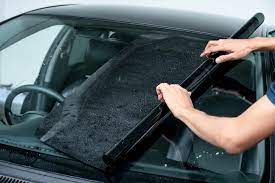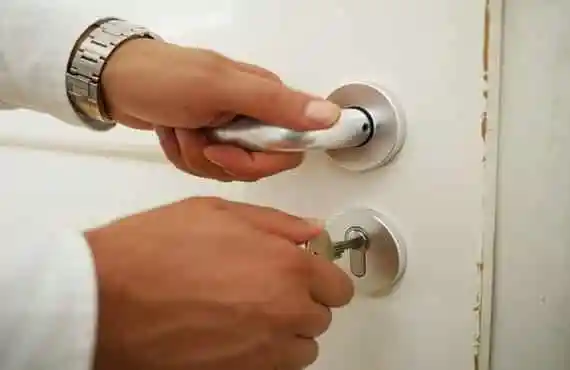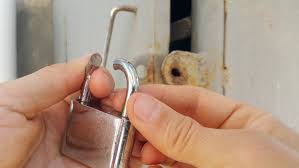Understanding Auto Window Tinting: Legal Limits, Costs, and Care

When it comes to upgrading your vehicle’s aesthetics and comfort, auto window tinting stands out as one of the most popular and practical choices. From reducing glare and heat to enhancing privacy and UV protection, tinted windows offer a wide range of benefits. However, before you rush to get your car windows darkened, there are several important factors you should consider—such as local laws, material types, installation quality, and post-installation care.
This guide breaks down everything you need to know about auto window tinting, including legal limitations in various states, the average cost of installation, different types of tint materials, and how to properly care for your tinted windows to keep them looking sharp for years to come.
What Is Auto Window Tinting?
Auto window tinting refers to the application of a thin film to the interior side of a vehicle’s windows. This film is usually made from polyester and is treated with dyes, metals, or ceramics to achieve the desired level of tint and performance. The film works by controlling the amount of visible light, infrared radiation, and ultraviolet rays that pass through the glass.
Not all tints are created equal. Some are purely aesthetic, offering a sleek, uniform appearance, while others provide enhanced solar control, helping regulate cabin temperatures and protect interiors from fading. Whether you're focused on style, comfort, or function, there’s a tint for every driver’s need.
Benefits of Window Tinting
One of the biggest draws of tinting is its ability to improve driving comfort. By blocking out sunlight and reducing glare, tinted windows make it easier to see on bright days or when the sun is low on the horizon. This not only helps reduce eye strain but also enhances safety.
Tinted windows also help keep your vehicle cooler by limiting how much infrared heat enters the cabin. This reduces the need for excessive air conditioning use, which in turn can improve fuel efficiency. For drivers in warmer climates, this benefit alone is often worth the investment.
Another advantage is UV protection. High-quality auto window tints can block up to 99% of harmful ultraviolet rays, helping to protect your skin and prevent the interior of your vehicle from cracking or fading over time.
Lastly, many drivers value the privacy that tinting provides. Darkened windows prevent prying eyes from seeing inside, offering peace of mind whether you're parked in public or sitting in traffic.
Legal Tint Limits by State
While the benefits of tinting are many, it’s essential to follow your state’s legal guidelines to avoid fines or mandatory removal. Every state in the U.S. has its own window tinting laws that specify how dark or reflective a tint can be.
The most commonly regulated factor is Visible Light Transmission (VLT), which is the percentage of light that can pass through the window. Lower VLT percentages mean darker tints.
For example:
In California, the front side windows must allow at least 70% of light in.
In Florida, the front side windows can be as dark as 28%, and the back side windows can go down to 15%.
In New York, front side windows must let in more than 70% of light, but rear windows can be darker if the vehicle has dual side mirrors.
Windshield tinting is also typically restricted to the top few inches, known as the AS-1 line, though laws vary on this too.
Always check your local DMV or state-specific tint regulations before choosing a film. Professional installers will often be familiar with these guidelines and can help ensure compliance.
Types of Window Tint Films
There are several types of window tint films available, each with different performance characteristics and price points.
Dyed Window Film
This is the most affordable option and offers good glare reduction. However, it tends to fade over time and provides limited heat reduction.
Metalized Window Film
Metalized tints reflect heat and UV rays more effectively than dyed films. They are durable and provide added strength to windows, but the metallic content may interfere with GPS, cell phones, and radio signals.
Carbon Window Film
Carbon tints provide excellent UV protection and a matte finish without the interference issues of metalized films. They also offer better longevity compared to dyed options.
Ceramic Window Film
The most advanced (and most expensive) option, ceramic films block out the most UV and infrared radiation while maintaining high visibility. They’re ideal for drivers seeking maximum performance, durability, and appearance.
How Much Does Auto Window Tinting Cost?
The cost of tinting your vehicle varies based on the type of film, the size of your vehicle, and whether you’re tinting all windows or just a few. Generally, you can expect to pay:
$100 to $200 for a basic tint using dyed film
$200 to $300 for mid-range metallic or carbon film
$400 to $800 for premium ceramic tint installations
Luxury vehicles or those with complex window shapes may cost more due to the difficulty of installation.
Keep in mind that professional installation offers better results and longer-lasting tint than DIY kits. Reputable tint shops also provide warranties that cover bubbling, peeling, or fading—giving you peace of mind over time.
What to Expect During Installation
When you bring your car in for tinting, the installer will begin by cleaning each window thoroughly to remove any dirt, oils, or adhesives. Any imperfection can lead to bubbles or poor adhesion, so prep work is critical.
Once clean, the tint film is cut—either by hand or using a computer-guided plotter—and applied to the interior of each window. It’s then squeegeed to remove air bubbles and ensure even contact.
Most installations take between two to four hours depending on the number of windows and the complexity of the job. After installation, there’s a curing period of two to five days during which you should avoid rolling down the windows or cleaning them.
Caring for Tinted Windows
Proper care is essential to maintain the appearance and performance of your tint over time. Here are a few important tips:
Use only ammonia-free cleaners when cleaning tinted windows, as ammonia can break down the adhesive and discolor the film.
Avoid abrasive cloths or scrubbers. Use a soft microfiber cloth and gentle strokes to avoid scratching the film.
Wait at least 48 to 72 hours before cleaning your windows after installation to allow the film to fully cure.
Park in shaded areas when possible to reduce UV exposure and heat stress on the tint.
Taking these precautions will extend the life of your tint and keep your car looking sleek.
Choosing a Reputable Installer
Selecting the right installer is just as important as choosing the right film. A certified, experienced professional will ensure a clean installation, free of bubbles, creases, or peeling edges.
Ask about the type of film they use, what warranties are included, and whether they comply with local tint laws. Online reviews and customer testimonials are also useful indicators of quality service. Shops that specialize in auto window tinting are more likely to have the tools, training, and attention to detail required for a seamless finish.
When Is the Best Time to Tint Your Windows?
While tinting can be done year-round, warmer, drier months tend to offer better conditions for proper curing. Humidity and cold temperatures can extend the drying time and increase the risk of imperfections.
If you need tinting during the winter or rainy seasons, choose a shop with a controlled indoor workspace to ensure the best outcome. Some installers even offer mobile services, but this is only recommended if they can provide a dust-free, temperature-controlled environment.
Conclusion
Auto window tinting is more than just a cosmetic upgrade—it’s a practical investment in comfort, safety, and vehicle longevity. By understanding the legal regulations, film types, installation process, and ongoing care requirements, you can confidently choose the right tint for your car. Just remember to consult with professionals who specialize in auto window tinting, as they’ll guide you through compliance, performance, and finish options tailored to your needs. Whether you’re seeking privacy, UV protection, or a more stylish ride, properly installed window tint can make all the difference in your driving experience.
Note: IndiBlogHub features both user-submitted and editorial content. We do not verify third-party contributions. Read our Disclaimer and Privacy Policyfor details.







